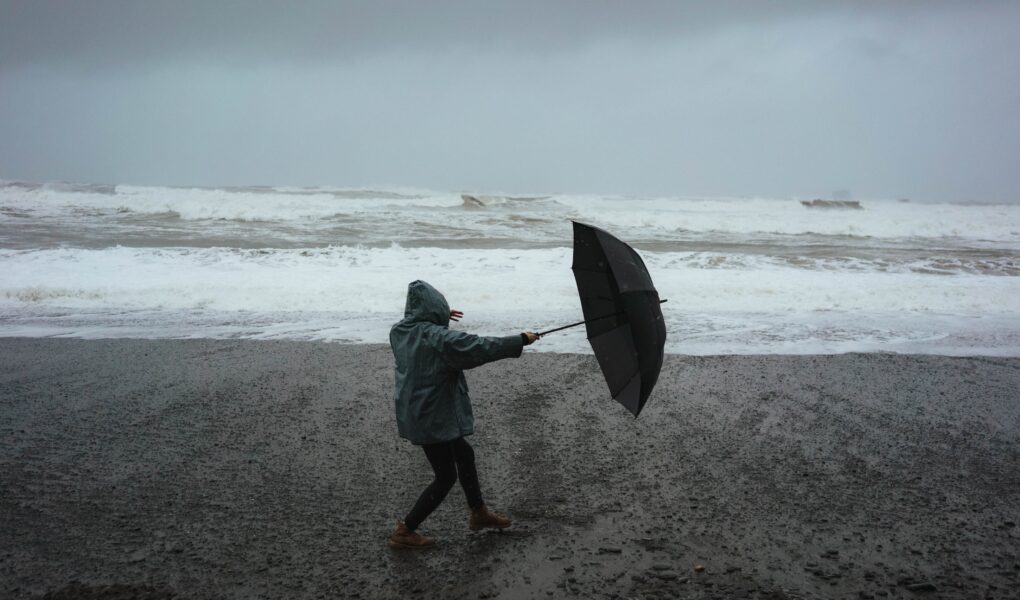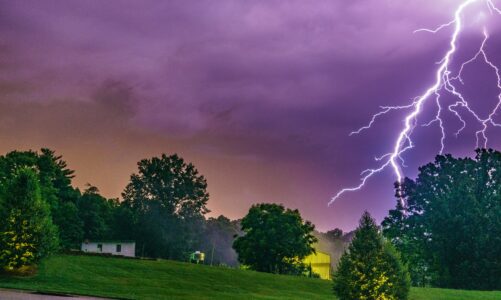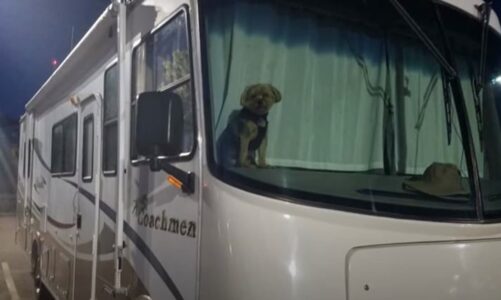Your RV Disaster Plan – staying safe on the road.
This is a basic outline of necessities for your RV disaster plan. I’ll go into more detail in later articles.
Click here to see my article on the importance of NOAA Weather Radios.
Top Ten Tips for your RV Disaster Plan –
1) Leave wiggle room in your travel schedule, and plan for contingencies.
When you want to visit multiple places in a short period of time, it’s tempting to make a tight schedule with long travel days, with no room for error.
To add to the stress, many campgrounds have no-refund policies for short-notice cancellations. You don’t want to pay and not stay, so you push yourself to get there, no matter what.
To make things worse, many previously reliable emergency overnight locations, like Walmarts, often can’t take us anymore. That’s usually because of local ordinances.
That’s how a lot of unnecessary crises and tragedies can occur. You make yourself stay on schedule, and then you travel in bad weather, on a low tire, with a funny sound in your engine, or with low fuel and supplies.
Slow down your schedule. Allow for extra time at most locations, and cover less distance on travel days.
2) Have emergency supplies in each vehicle.
It doesn’t help if you’re stuck in your tow vehicle, and all your supplies are locked in your travel trailer. Or vice versa.
Some basic supplies are a first aid kit, drinking water and snacks, disposable cleanliness products, different sizes of ziplock baggies, road flares, flashlights and long lighter, tools for vehicle repairs, travel blankets and rain slickers, extra shoes and clothes, and a good travel atlas. Map apps are great until you lose your internet.
A cheap bicycle helmet can be a lifesaver if you are caught in flying debris during a severe storm.
3) Have a written RV disaster plan for who-does-what before disaster strikes.
Make sure your plan is accessible and easy to see. Don’t trust your memory in a crisis, to either find anything or to remember anything. That’s not how our brains work.
Develop your plan over a period of time. Review it on a regular basis, and think about things you might have missed.
Who does what when an alarm goes off? There are lots of kinds of alarms–fire, propane, severe weather. Don’t wait until you hear an alarm, to figure out what to do. Who checks on kids and pets, closes windows, pulls in the awning, unplugs electronics?
Just taking a day trip away from your RV or tent site? Make sure you pull in your awning and secure anything loose that is outside.
Do these things, even when it’s a bright sunny day with a perfect forecast. Weather can just come “out of the blue”, as they say.
4) Be aware of objects that could either go airborne or get drenched at your campsite.
This is a big thing to watch for around Quartzsite! You can go from dead calm to a whirlwind in a split second.
Or from clear skies to a driving sideways rain. Those blowing rains can quickly soak things that you have stashed under your RV or vehicle.
Watch for things that nature has left lying around, as well as things that you and your neighbors have set outside.
Outdoor vendors need to keep a close eye on their displays. Have tarps and weights where you can get to them quickly.
5) Monitor your awnings and tents, and anything else that could catch the wind.
Even on the calmest days, make sure your tents are properly weighted. To be extra careful, secure your tent with mule strap tie downs. That goes for both pop-up tents and sleeping tents.
Awnings are pricy attachments on an RV, so take good care of yours. Pull them in at the first sign of strong winds. And never leave them extended out when you leave your campsite — even for a quick trip to town!
Unless the winds are particularly strong, we usually pull our awning in half way. It’s less stress on the fabric, and the half-shade still protects the back of our refrigerator from intense sun.
6) Locate the nearest storm shelter as soon as you reach your campsite.
Many campgrounds have maps that are clearly marked with designated storm shelters. This is especially true in “tornado alley” states.
If your campground doesn’t have a designated storm shelter, look for the safest possible nearby location as soon as you arrive at your campsite. Campground bathrooms and shower houses are often made of sturdy materials like cinder blocks or brick.
Better yet, look for nearby storm shelters before you arrive at your campsite. Most camping areas will have someone who can answer that question over the phone, text, or email.
Don’t plan on riding out a severe storm or tornado in your RV or vehicle! They can instantly become death traps.
Flying debris causes many tornado fatalities. Many of those lives could have been saved with a simple, cheap bicycle helmet.
We bought our “tornado helmets” at Walmart for $15 each. Maybe someday we’ll actually wear them while biking.
Click here to see our helmets.
7) Track current and upcoming weather for your location, especially on travel days.
If you are somewhere with cell phone and internet service, keep a close eye on radar and upcoming forecasts.
You can’t always predict when you will hit a “dead zone” with no phone or internet service, when you are travelling in unfamiliar areas.
That is why it is so important to have a NOAA Weather Radio as part of your RV disaster plan! They can keep you undated with lifesaving information when you are caught in a dead zone. NOAA Weather Radios work where cell phones and internet don’t.
Make sure you keep your Weather Radio fully charged and accessible!
Click here to read my article about NOAA Weather Radios, and our own choice, the Midland Weather Radio.
8) Learn about different kinds of emergencies before you get caught in one.
Do some basic research about different kinds of emergencies, before they happen to you. Know what to look for, and how to prepare. Different emergencies require different kinds of preparations.
Keep a notebook with to-do lists and supplies, for each type of emergency. Don’t forget about your pets. If you find yourself stuck with no access to water, they will get thirsty, too.
Don’t wait until a crisis happens to start your research. There is a good chance you won’t have phone, internet, or quick access to nearby supplies, when an emergency occurs.
This is especially critical when you travel to regions that tend to have different emergencies than those with which you are accustomed, at home.
9) Give your travel schedule to someone.
Make sure someone knows where you are supposed to be, and when you are expected to arrive and leave.
There are great GPS apps that other people can use to track your location at any time. However, they tend to use a lot of data, so that’s something to consider.
If you are going to a particularly remote area, make sure there is somebody who knows where you are supposed to be. It can be a family member, a neighboring camper, or a camp host.
Make sure you let them know when you return safely!
10) No matter how much you plan and prepare, unexpected things are going to happen.
Try to stay calm, and try to stay kind.
Watch your words. Harsh words will be remembered long after the crisis is over.
If you say something horrible, apologize. Don’t assume your words will be brushed off because of the emergency.
We’re all going to make stupid mistakes during emergencies. Our brains just aren’t working at top speed in the middle of a crisis.
Forgive, love, and be kind.
Remember why you travel. Why you’re on the road. Remember the good times, and don’t let fear overtake you.
And just try to do better next time.
Feature image by Dziana Hasandekava

My husband Steve and I are full-time RV nomads. We think that Quartzsite, Arizona is a great place for relaxing, making friends, and enjoying the desert sky. Follow the unique world of Quartzsite and the nomad life with us.




